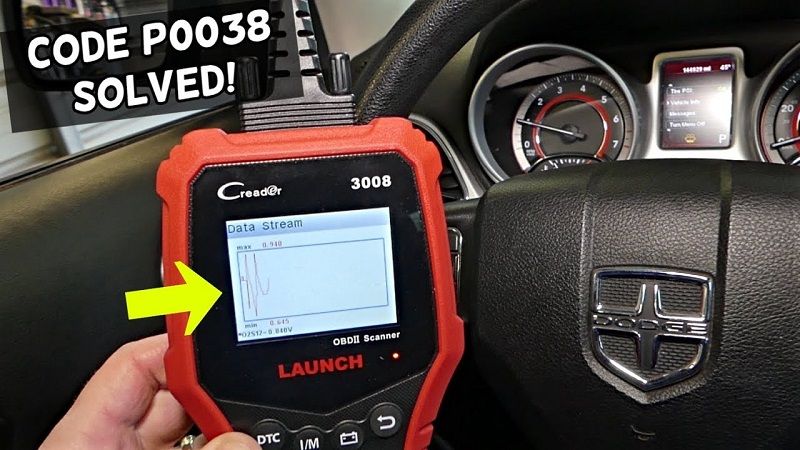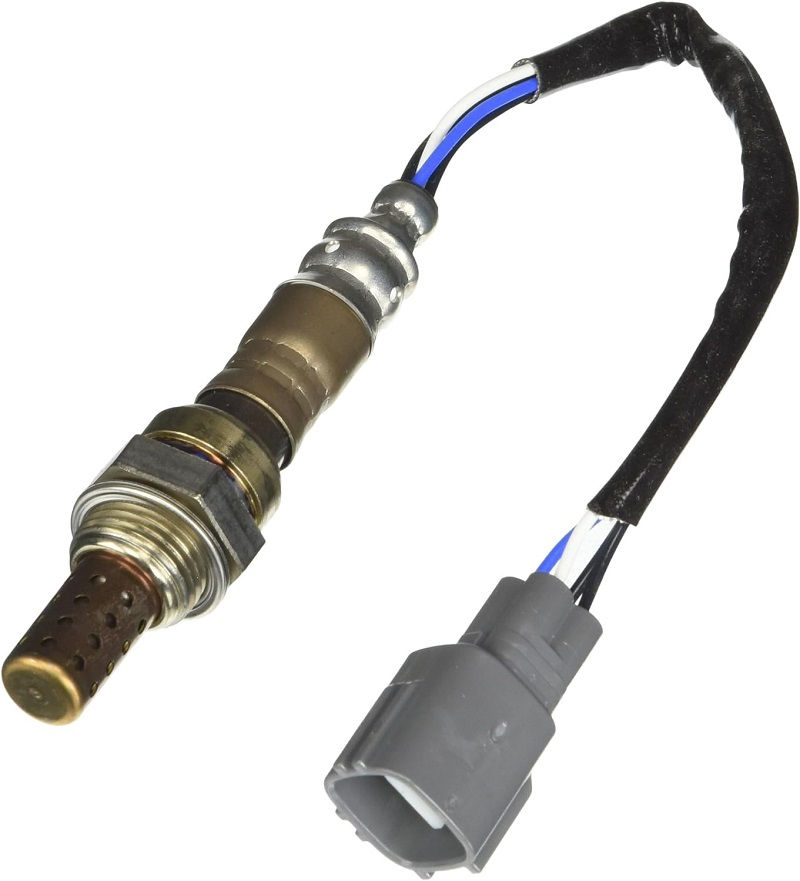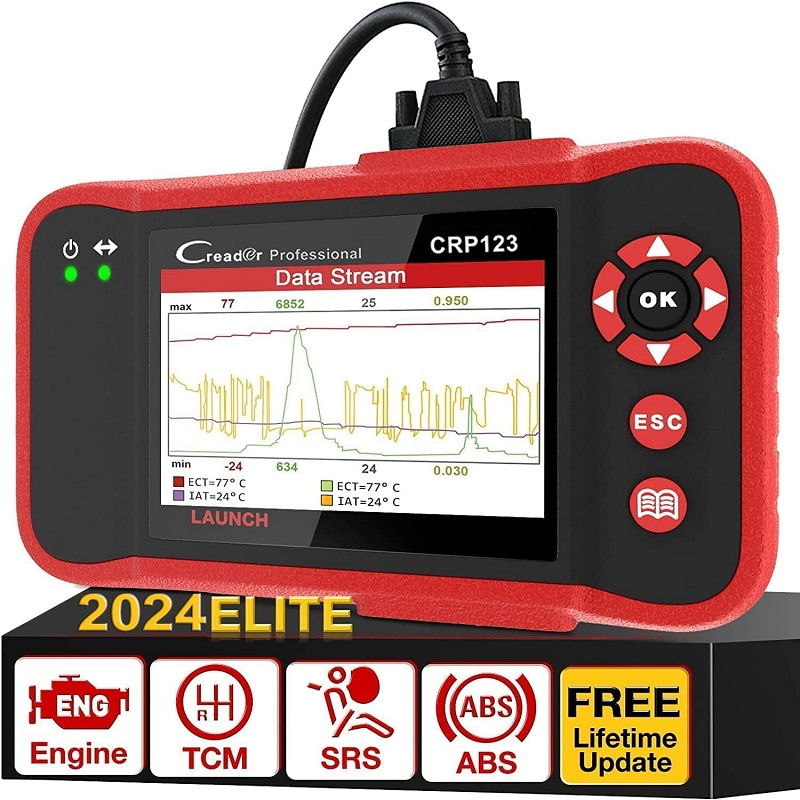This post contains affiliate links. This means I will make a commission at no extra cost to you should you click through and make a purchase [ “As an Amazon Associate, I earn from qualifying purchases.” ]. Read the full disclosure here.
Cracking the Code: Understanding P0038 – HO2S Heater Control Circuit High (Bank 1 Sensor 2) GuideMechanic.Com In the intricate world of automotive diagnostics, deciphering trouble codes is akin to solving a puzzle.
One such enigmatic code, P0038, revolves around the HO2S (Heated Oxygen Sensor) Heater Control Circuit being detected as high for Bank 1 Sensor 2.
In this comprehensive article, we embark on a journey to unravel the complexities surrounding P0038, exploring its significance, potential causes, diagnostic procedures, and effective solutions.
See Also: P0036 HO2S Heater Control Circuit (Bank 1 Sensor 2)
P0038 HO2S Heater Control Circuit High (Bank 1 Sensor 2)
Understanding P0038:

P0038 is part of the OBD-II (On-Board Diagnostics II) system, a standardized protocol implemented in vehicles to monitor and report malfunctions related to engine performance and emissions control.
Specifically, P0038 signifies an anomaly in the HO2S Heater Control Circuit for Bank 1 Sensor 2. To grasp the implications of this code, it’s essential to understand the role of the heated oxygen sensor in the vehicle’s exhaust system.
The heated oxygen sensor, or HO2S, is a critical component tasked with monitoring the oxygen content in the exhaust gases. This information is vital for the engine control unit (ECU) to adjust the air-fuel mixture accurately, optimizing combustion efficiency and reducing emissions.
Bank 1 Sensor 2 refers to the specific sensor located downstream from the catalytic converter in bank 1 of the engine (typically the side with cylinder 1), which monitors oxygen levels after the exhaust gases have undergone treatment.
When the Heater Control Circuit for this sensor is detected as high (P0038), it indicates a potential issue with the electrical circuit responsible for heating the sensor element.
Proper sensor heating is crucial for accurate and timely feedback to the ECU, particularly during cold start conditions when exhaust gases are cooler and sensor responsiveness is essential for efficient engine operation.
Common Causes of P0038:
Diagnosing the root cause of P0038 requires a systematic approach and a keen understanding of automotive electrical systems. While precise diagnosis often necessitates specialized tools and expertise, several common culprits are typically associated with this trouble code:
Faulty HO2S Heater Element:
The heating element within the oxygen sensor may experience an internal short or malfunction, causing it to draw excessive current and trigger a high voltage condition.
Wiring Issues:
Any abnormalities in the wiring harness connected to the HO2S Heater Control Circuit can lead to a high voltage condition, such as damaged insulation, short circuits, or poor connections.
Faulty Relay or Fuse:
A malfunctioning relay or fuse in the circuit responsible for supplying power to the HO2S heater can result in an increased voltage level, triggering the P0038 code.
ECU Malfunction:
In rare cases, the issue may lie with the engine control unit itself, which fails to regulate the voltage supplied to the HO2S heater circuit, resulting in a high voltage condition.
Environmental Factors:
Extreme temperatures or environmental conditions can affect the performance of the HO2S heater, potentially leading to abnormal voltage readings and triggering P0038.
P0038 HO2S Heater Control Circuit High (Bank 1 Sensor 2)
Diagnostic Procedures:
Check out this Denso 234-4261 Oxygen Sensor with 4-Wire 10” Harness for Lexus/Toyota V-6 Downstream Left/Front

To diagnose and address P0038 effectively, automotive technicians typically follow these steps:
Code Retrieval:
Utilize an OBD-II scanner to retrieve the trouble code (P0038) stored in the vehicle’s ECU. This confirms the presence of the issue and provides a starting point for diagnosis.
Visual Inspection:
Conduct a thorough visual inspection of the wiring harness, connectors, and associated components related to the HO2S Heater Control Circuit. Look for signs of damage, corrosion, or loose connections that could affect electrical conductivity.
Test Heater Circuit Voltage:
Using a multimeter or specialized diagnostic tool, measure the voltage at various points along the HO2S Heater Control Circuit to identify any abnormalities or voltage spikes indicative of a high voltage condition.
Inspect HO2S Heater Element:
Test the resistance of the HO2S heater element using an ohmmeter to ensure it falls within the manufacturer’s specified range. An out-of-range resistance reading may indicate a faulty sensor requiring replacement.
Check Relay and Fuse:
Inspect the relay and fuse associated with the HO2S Heater Control Circuit to ensure they are functioning correctly. Replace any defective components as necessary.
Verify ECU Signals:
Use a diagnostic tool to monitor the signals sent by the ECU to control the HO2S heater circuit. Ensure that the ECU is providing the appropriate commands to regulate voltage levels and activate the heater circuit.
Potential Solutions:

Based on diagnostic findings, several solutions may be required to rectify P0038:
- Replace HO2S: If the heated oxygen sensor is found to be faulty, replace it with a new sensor to restore proper functionality.
- Repair Wiring Issues: Address any wiring problems identified during inspection, such as repairing damaged wires, replacing connectors, or improving grounding connections to prevent high voltage conditions.
- Replace Relay or Fuse: If the relay or fuse is determined to be defective, replace it with a new one to ensure proper power supply to the HO2S heater circuit and prevent voltage spikes.
- Rectify ECU Issues: If the issue lies with the ECU, consult with a qualified technician to determine the appropriate course of action, which may involve repairing or replacing the ECU to ensure proper voltage regulation.
- Address Environmental Factors: Take measures to protect the HO2S heater from extreme temperatures or environmental conditions that may affect its performance and contribute to high voltage readings.
P0038 HO2S Heater Control Circuit High (Bank 1 Sensor 2)
Conclusion:
See Also: P0037 HO2S Heater Control Circuit Low (Bank 1 Sensor 2)
P0038, indicating a high voltage condition in the HO2S Heater Control Circuit for Bank 1 Sensor 2, underscores the importance of precise sensor operation in modern vehicle emissions control systems.
By following systematic diagnostic procedures and addressing potential causes such as faulty components or wiring issues, automotive technicians can effectively resolve P0038 and restore optimal engine performance and efficiency.
Regular maintenance and proactive troubleshooting are essential for identifying and addressing trouble codes promptly, ensuring vehicles operate smoothly and comply with emissions regulations.
- Trucks with Navigation for Sale - June 30, 2025
- Trucks with Camper Shell for Sale - June 30, 2025
- Trucks for Hauling Heavy Loads - June 30, 2025
